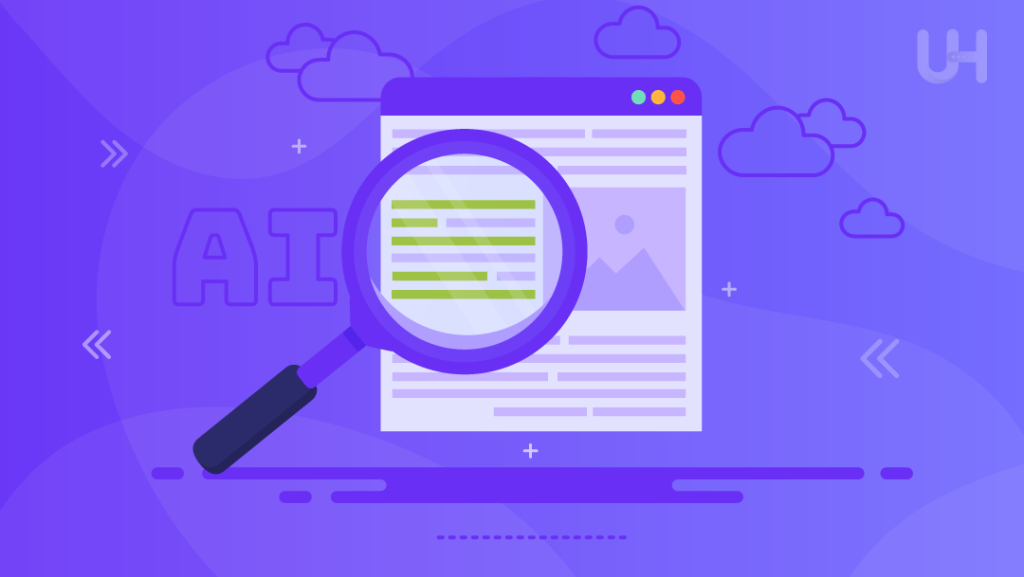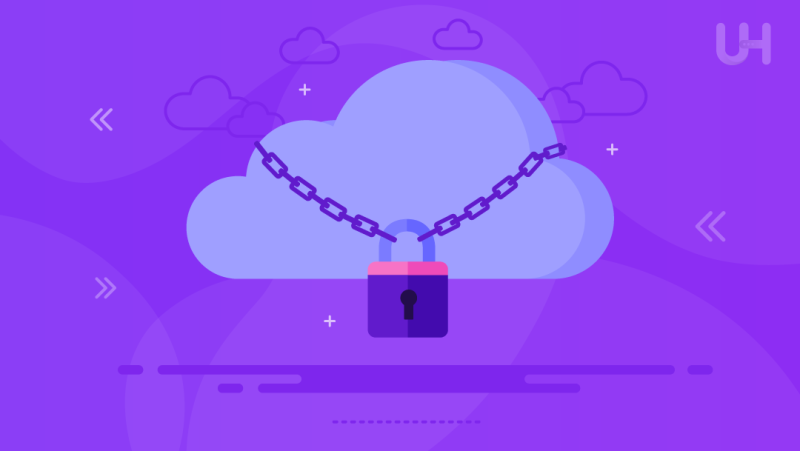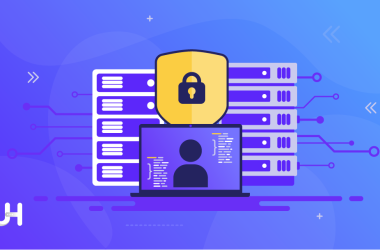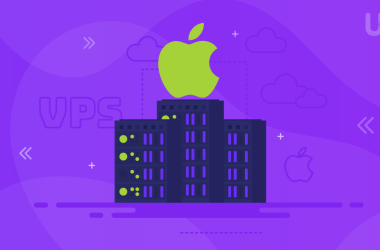Cyber threats are a growing concern for agencies working digitally nowadays. This is where Cloud Security Best Practices come in to play their part. They act as a guidebook for businesses to keep their digital possessions safe and secure in the cloud. But it’s not just about knowing the basics; it’s about staying one step ahead of cyber threats that are always evolving. Strong access controls, encryption software, and regular protocol review help build barriers against digital threats.
In this blog, we deliver the best practices for cloud data security. Elaborate techniques to build on an advanced cybersecurity practice that allows you to secure the cloud environment and keep the data safe.
What is Cloud Security?
Cloud security is about the methods, tools, and rules used to keep data, applications, and systems safe in cloud computing settings. As more companies move their information and services to the cloud, it’s very important to make sure these things are secure. Here are some best security practices to protect your cloud computing:
Security in the shared hosting cloud is an important factor in generating trust between the consumers and the cloud providers. The question of what to do with old nuclear sites is becoming increasingly important since the security of the surrounding environment depends to a great extent on that. In many cases, it is the duty of the CSP to secure various components of the cloud environment; however, some responsibilities are part of the end-user’s domain. Notwithstanding that CSPs address the foundation’s safety, users have to secure their data, applications, and configurations while blending them into the cloud environment.
They should be able to grasp their duties as experts in their area of competencies. Such implementations as access controls, encryption, and properly delivered security configurations for their cloud resources won’t be left out. On top of that, regular audits and in-life checks promote compliance with security standards.
IAM Fortress: Secure Access Control
The IAM mechanism acts as the guard of the cloud-based resources by authorizing access to the files, controlling permissions and positions of the cloud resource degree, starting with admins, while managing their rights, permissions, and authority within the cloud environment.
- Principle of least privilege: Stimulate user for only the required privileges that enable them to execute their job responsibilities, as this minimizes any possible security risks. Create a poll about recycling in your area.
- Continual authorization review: Periodically appraise and adapt authorization status to keep it compatible with a dynamic organizational structure, ultimately maximizing security level.
- Adoption of authentication protocols: Employ multiple-factor authentication (MFA) to strengthen security controls and ensure internet service security.
Data Encryption: In Transit & At Rest

Data security is essential for secure cloud computing as it encrypts confidential matters. While data encryption prevents information theft when data travels between two systems or data rests on their servers. As data travels across networked platforms, information encryption provided by protocols such as TLS or SSL certificates renders it unreadable even to a third party intercepting the transmission. Similarly, secure file transfer protocols like SFTP and FTPS utilize encryption to safeguard data transfers. Many organizations rely on encryption software to implement these protocols seamlessly, ensuring consistent protection across systems. Experts at G2 have even compiled a guide on the top encryption software solutions, helping businesses make informed decisions.
While data at rest is also valuable, encryption algorithms must applied effectively as they could be highly confidential information from servers or databases. This approach is to prevent decrypted data from leaking out even if unauthorized access occurs. The important decryption key will be differently maintained, so the decrypted data will be unintelligible without it.
Encryption for data in transit and rest are some of the best measures that integrate with organizations to decrease the possibility of data breaches and protect data confidentiality and integrity. Web application firewalls (WAFs) can further enhance cloud security by filtering and monitoring traffic to web applications, helping to block malicious requests and vulnerabilities.
Continuous Monitoring: Detect & Respond
Uninterrupted real-time surveillance is vital for preserving the protection of the cloud ecosystems. It consists of keenly monitoring the jobs and setups. The surveillance team should constantly monitor different aspects, such as network traffic, system logs, and user activities, to quickly detect any indications of anomalies or threats. Intended disclosure becomes quickly detected thanks to unusual behavior, unauthorized access attempts, or vulnerability exploitation.
When officials identify any abnormal activity, the respective organizations need to have response mechanisms to the problem; otherwise, organizations may fail to address the problem accordingly. This might include, for example, the employment of some automated solutions, like blocking suspicious IP addresses or setting aside affected systems for dedicated work, as well as by human security personnel, such as those managing dedicated servers.
Pen Testing: Uncover Weakness
Penetration testing (pentest is an abbreviation for this term) ensures security in the cloud environment. We carry out mock cyberattacks to discover vulnerabilities and weak spots before malicious actors exploit them.
- Penetration Testing: By constantly conducting pen tests, organizations will increase the effectiveness with which they carry out security and become more prepared in terms of defense.
- Vulnerability Scanning: With vulnerability scanning, you can run scans on network infrastructure, software, or hardware in pursuit of where attackers can launch their intrusion.
- Risk Identification: The explanation of the vulnerability types, such as pitfalls due to misconfigurations, the use of outdated software, or weak identification, is the job of this process.
Least Privilege: Grant Only What’s Needed
Least Privilege is the first pillar of cloud security, and it is the principle that advisers grant users only the minimum level of access they need to execute their tasks. In this manner, the organizations manage the security risks arising from unauthorized access, internal non-malicious threats, and accidental breaches. In accordance with the Principle of Least Privilege, a person should be given specific responsibilities, authorizations, and permissions only for demanded activities or operations.
You will minimize the approach to the hack and not expose yourself to malicious actors attempting to find unnecessary privileges. Permissions are reviewed and updated regularly through a scheduled service to enable the ability to change and adapt to business requirements, preventing attacks and security breaches.
Get enhanced and secure with fully managed hosting!
Get the best safety and work smoothly with UltaHost’s completely managed hosting plans, which are made just for your specific requirements.
Cloud Misconfig: Avoid Security Gaps
The organization should avoid cloud misconfigurations to prevent severe security issues. A misconfiguration only happens because of human mistakes or as a result of inadequate comprehension of cloud services. The first step, however, is to have a good knowledge and awareness of the environment and the security features available on the cloud. Perform automated configuration checks to prevent building if required customizations are missed.
Performing regular audits of configurations is necessary to implement security by best practices and comply with industry standards. Instruction on conducting updates in the correct way and a constant update of the documentation are the most relevant here. Maximize the number of machines or services cloud service providers provide to improve security and detect incorrect configurations properly.
Cloud Logging: Gain Security Visibility
Cloud logging enables the administrator to monitor security events and observe activities inside a cloud, which helps securing cloud environment. By recording events, admins can observe activities and detect suspicious incidents and security threats. Important information about user actions, system activities, and network traffic are presented in the log to recognize unauthorized users, data privacy breaches, and so on.
Making sure to represent all necessary information, such as account intrusion attempts, configuration adjustments, and application activities in close proximity, a complete log mechanism enforces the representation. Centralized log management reduces data analysis complexity because of the facilitation of the correlation of the log data, which in turn allows one to go on the offense against possible threats and save time in incident response.
Incident Response: Be Ready To Act
Incident Response consists of a clear ladder of steps and a group of experts who will respond to security breaches or incidents. It starts with constant surveillance of possible threat sources. Develop communication channels and improve network latency and also escalation procedures to ensure a fast response to severity levels.
Immediate contention of the incidents is an important ingredient to maintain as much as possible. Maintain a fixed record of all activities undertaken during the response that will be of importance for post-incident analysis and improvement. Updating and putting the plan to work in repeated rehearsals is an important part of making sure it is effective. Work together with all pertinent parties already involved, such as IT staff members, legal counsel, and law enforcement officers (if the need arises).
Secure Endpoints: Protect Your Perimeter
Some of the most important defenses against cyber threats are at the endpoints of your system, and as a result, you must ensure their protection. Devices (e.g. laptops, desktops, and mobile phones) are the ports of call for different types of risk like cyber-attacks. Peers and social circles can transmit the attacks. Implement solid security solutions, including antivirus software, firewalls, and intrusion detection systems, to the endpoints to blockade these attacks.
Install patches to update software to fix vulnerabilities or strengthen defenses against growing threats. Lastly, conduct comprehensive employee training to improve understanding of endpoint security best practices and accurate handling to lower attack susceptibility.
Conclusion
Finally, according to these cloud security best practices, cyber defense is possible. Security raises the gate, checks the perimeter with encrypted language, alerts intruders, and responds promptly to incidents. This gives strict security rules like pen testing and the least privilege principle to ensure that the methods used are the right ones. The creation of safeguards through software and class is fundamental. Such actions work as a viable security structure in the cloud computing space and safeguard critical data. These measures make a cyber-security framework considerably strong.
For security, performance, and speed, UltaHost’s Storage VPS solution is the ideal choice. Benefit from data protection measures, efficient resource allocation, and fast data capabilities. Elevate your hosting with our technology.
FAQ
What are coming cloud security principles?
These basic guidelines would involve knowing the traps involved, having robust access control, using encryption, and having ongoing reviews and penetration testing.
What is the cloud-shared data responsibility security model?
The cloud security model focuses on the shared responsibility principle: both cloud service providers and end-users have to take the means of modeling a secure cloud.
What are the three steps to cloud security?
For enhanced cloud security, you can break down the process into three steps: think about it, build it, and secure it. This will prevent cloud breaches.
What is the role of IAM and cloud security, and how can we make use of them?
IAM coordinates users’ access and permissions in the cloud; it pursues the least privilege, sustainable review, and endorsement of authentication protocols.
What role does data encryption have in the cloud environment?
In the process of data being transferred and at rest, encryption prevents information disclosure and corruption and eliminates data breaches chance.










